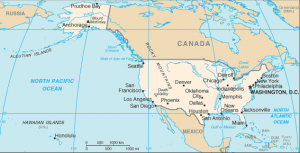As the number of children sickened by Enterovirus EV-D68 (HEV68) continues to swell in the Midwest and beyond, the CDC is basically saying that this is only the beginning of the outbreak.

To date, ten states have contacted the CDC for assistance in investigating clusters of enterovirus 68, these include Colorado, North Carolina, Georgia, Ohio, Iowa, Illinois, Missouri, Kansas, Oklahoma, and Kentucky.
Mark Pallansch, a virologist and director of the Centers for Disease Control and Prevention’s Division of Viral Diseases says what we are seeing may only “the tip of the iceberg”. “We’re in the middle of looking into this,” he said in an interview Sunday. “We don’t have all the answers yet.” The virus hasn’t been “officially” identified.
More than 100 types of enteroviruses exist causing about 10 to 15 million infections in the United States each year, according to the CDC. They are carried in the intestinal tract and often spread to other parts of the body. HEV68 is a unique enterovirus that shares epidemiologic and biologic features with human rhinoviruses (HRV). First isolated in California in 1962 from four children with bronchiolitis and pneumonia , HEV68 has been reported rarely since that time and the full spectrum of illness that it can cause is unknown.
The virus can start as just a cold. Signs include coughing, difficulty breathing and in some cases a rash. Sometimes they can be accompanied by fever or wheezing.
Respiratory problems appear to the hallmark of EV-D68, according to the Missouri Department of Health and Senior Services.
EV-D68 has also been reported overseas in countries including the Philippines, Japan and the Netherlands.


I know this is in Montana now too. My sister called and said they have their first case.